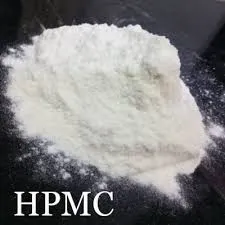
10 сар . 10, 2024 20:39 Back to list
hec hydroxyethyl cellulose
The Versatility of Hydroxyethyl Cellulose (HEC)
Hydroxyethyl cellulose (HEC) is a water-soluble polymer derived from cellulose, a natural polysaccharide found in the cell walls of plants. First synthesized in the mid-20th century, HEC has gained significant attention in various industries due to its unique properties and versatility. This article explores the characteristics, applications, and benefits of HEC, emphasizing its importance in modern formulations.
Chemical Properties and Structure
HEC is created through the etherification of cellulose, where ethylene oxide reacts with cellulose to introduce hydroxyethyl groups. This modification enhances the solubility of cellulose in water while maintaining its structural integrity. HEC is classified as a non-ionic polymer, meaning it carries no electrical charge, which contributes to its compatibility with a wide range of other ingredients.
One of the most notable features of HEC is its ability to form viscous solutions at low concentrations. This property makes it an effective thickening agent, providing a desirable texture to various products without significantly altering their transparency. HEC solutions are stable across a broad pH range and can withstand high temperatures, making them suitable for diverse applications.
Applications in Various Industries
1. Cosmetics and Personal Care HEC is widely used in the cosmetics industry for its thickening and emulsifying properties. It is common in products such as lotions, creams, shampoos, and conditioners. HEC helps to stabilize emulsions, ensuring a uniform distribution of oil and water components. Its ability to retain moisture also enhances the hydrating properties of skincare formulations.
2. Pharmaceuticals In the pharmaceutical sector, HEC is utilized as a binder, thickener, and film-forming agent in various dosage forms, including gels, ointments, and tablets. Its non-toxic nature makes it suitable for use in both topical and oral formulations. Additionally, HEC can modify the release profile of active ingredients, allowing for controlled or sustained release.
hec hydroxyethyl cellulose

3. Construction HEC serves as an additive in construction materials, such as cement and tile adhesives. It enhances the workability of the mix, improves water retention, and increases the adhesion of the material to surfaces. The use of HEC in construction products helps in achieving consistent quality and performance.
4. Food Industry In the food industry, HEC is recognized as a food additive (E460) and is used as a thickening and emulsifying agent. It can improve the texture of sauces, dressings, and dairy products. Its ability to retain moisture also helps in extending the shelf life of various food items.
5. Agriculture HEC is employed in formulated agrochemical products, assisting in the stabilization of pesticide emulsions and improving the adherence of sprays to plant surfaces. This enhances the efficiency of applications and reduces runoff, ultimately leading to better crop management.
Benefits of HEC
The use of hydroxyethyl cellulose in various applications comes with numerous benefits. It is biodegradable and derived from renewable sources, making it an environmentally friendly option compared to synthetic polymers. HEC is also non-toxic and hypoallergenic, ensuring safety for consumers during use.
Furthermore, its versatility allows manufacturers to tailor formulations to specific needs, enhancing product performance while maintaining stability. The adaptability of HEC to different conditions and its compatibility with various ingredients make it a valuable asset in formulation chemistry.
Conclusion
Hydroxyethyl cellulose is a remarkable polymer that plays a crucial role across various industries, from cosmetics to pharmaceuticals and beyond. With its unique properties, such as thickening, emulsifying, and moisture-retaining capabilities, HEC continues to be an essential ingredient in many formulations. As the demand for sustainable and effective materials rises, the use of HEC is likely to increase, affirming its status as a key player in innovation and development.
-
Versatile Hpmc Uses in Different Industries
NewsJun.19,2025
-
Redispersible Powder's Role in Enhancing Durability of Construction Products
NewsJun.19,2025
-
Hydroxyethyl Cellulose Applications Driving Green Industrial Processes
NewsJun.19,2025
-
Exploring Different Redispersible Polymer Powder
NewsJun.19,2025
-
Choosing the Right Mortar Bonding Agent
NewsJun.19,2025
-
Applications and Significance of China Hpmc in Modern Industries
NewsJun.19,2025







